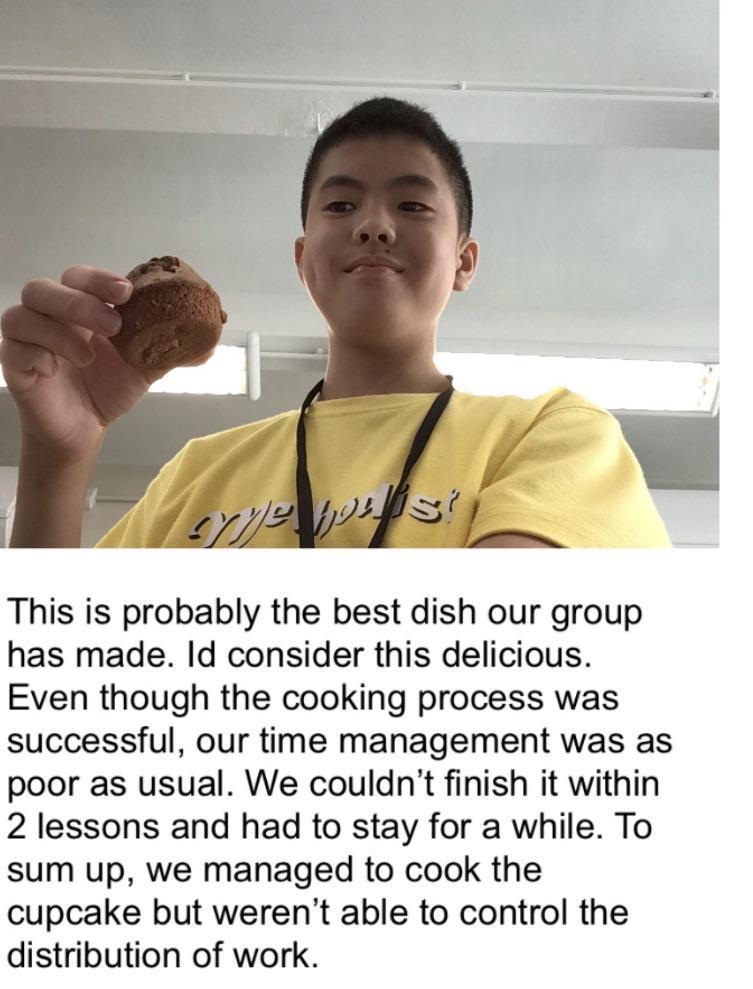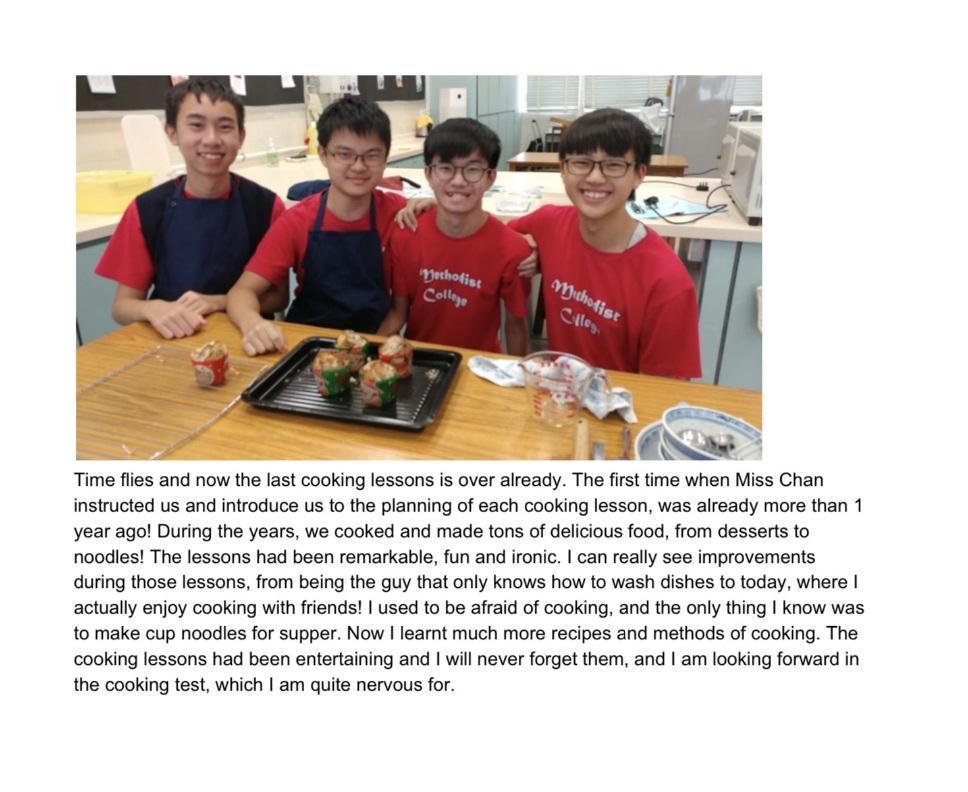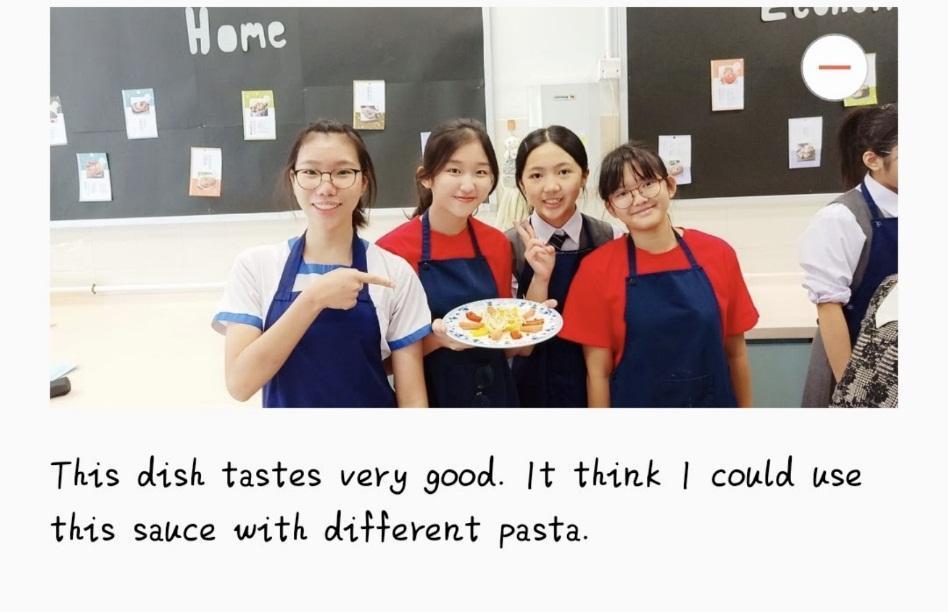Home Economics Department
Home Economics
Who needs to learn sewing? And cooking? Girls only? The answer you will find at Methodist College is ‘both boys and girls’. With reference to the students’ needs and features of proposed themes suggested by the EdB, the Home Economics Department has developed three tailor-made syllabuses for all junior form students, with the aim to equip our students with some practical skills for independent living. Therefore, both boys and girls have the chance to study Home Economics for a term annually from Forms 1-3.
The focus of the Form 1 syllabus is sewing. Basic knowledge and skills of sewing are introduced, for example, various stitches and sewing equipment. Students will then design their favourite patterns to be sewed on their ready-made aprons, so as to showcase their creativity. Students’ wits are also tested, since their designs need to match the unique school themes selected each year, like ‘care and love at MC’ for the celebration of the 60th anniversary. Many pieces of nice work were presented on the Founders’ Day in 2018.
After the students have mastered some basic skills of sewing, students will learn cooking in Forms 2-3. The half-year program includes theories and practical cooking lessons. The theories include kitchen equipment, safety, cooking methods and meal planning, etc. In cooking lessons, students have the chance to put the theories into practice. For instance, for cooking methods, they will make dishes by shallow frying, stir frying, baking, etc. whereas the cooking test is one of the final outcomes of meal planning lessons. In order to let students share the joy, they have opportunities to taste others’ dishes in the peer assessment session, from which they always show their appreciation and support to others. This can also help foster mutual learning between the students, since they can learn from the food made by their peers.
In order to let students learn independently, they will use their own electronic devices to search for information that will help them with their cooking test group project. Through gathering information by themselves, instead of relying on the notes provided by the teacher, students can acquire the skills of active learning and filtering information from the internet. The process of selecting useful information can further train the students’ analytical thinking. After cooking lessons, students will also need to upload the photos of the dishes with a self-reflection on the cooking lesson. The teacher will share the nice work with the classes, so that they can make further improvement.
With the foundation set by Home Economics lessons in junior forms, students are able to take care of themselves, for a more independent life and develop their potential in design and cooking while at the same time raising their awareness of a healthy lifestyle. Health is one of our most valuable assets, therefore, learning about a healthy diet, meal planning, etc. in Home Economics lessons can help them make healthier choices when picking their food, in order to safeguard this precious property.
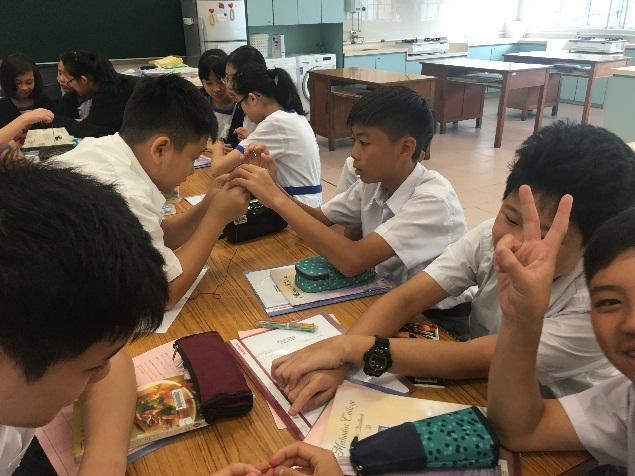
F1 sewing lesson – students are learning how to thread a needle in groups.
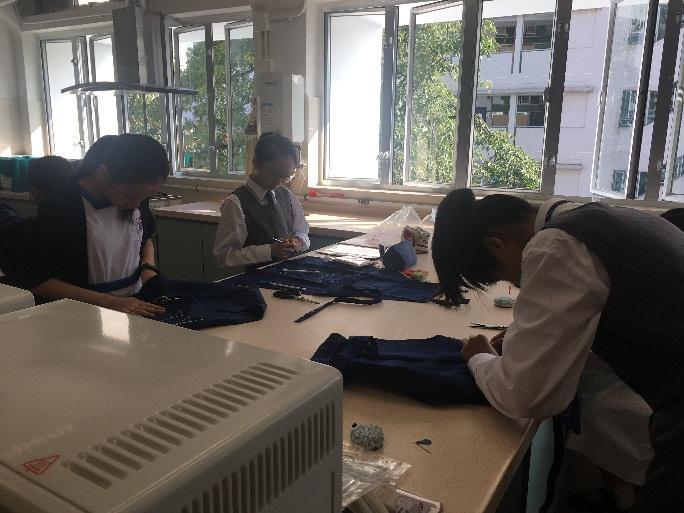
F1 sewing lesson – both girls and boys have the sewing lessons together.
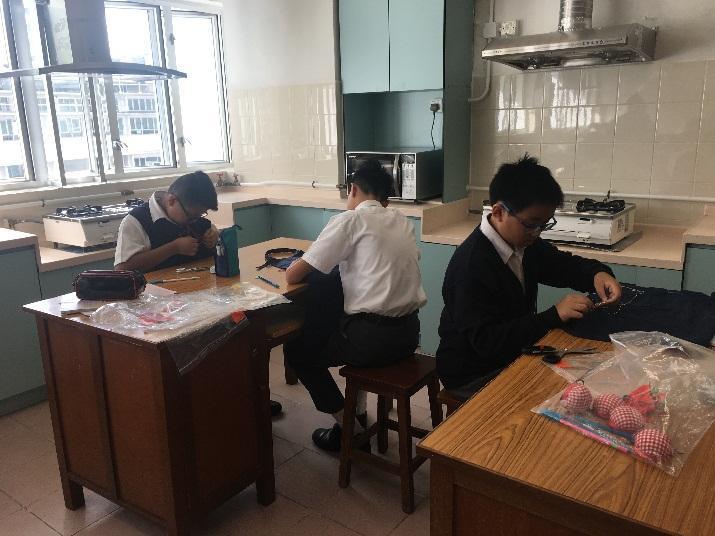
F1 sewing lesson – both girls and boys have the sewing lessons together.
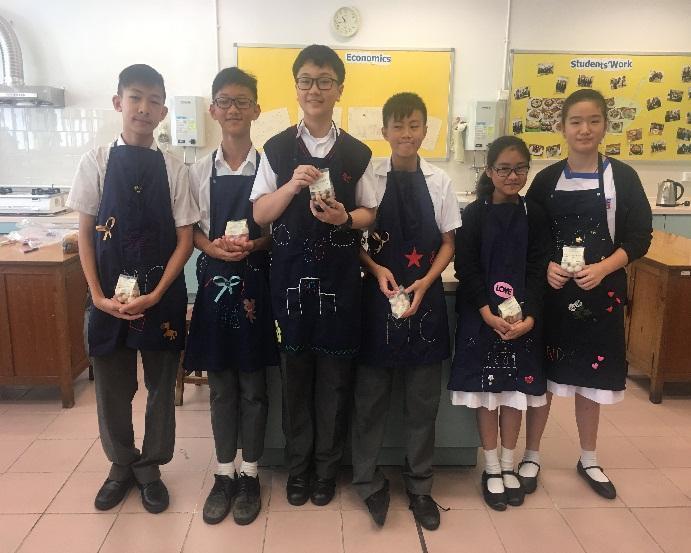
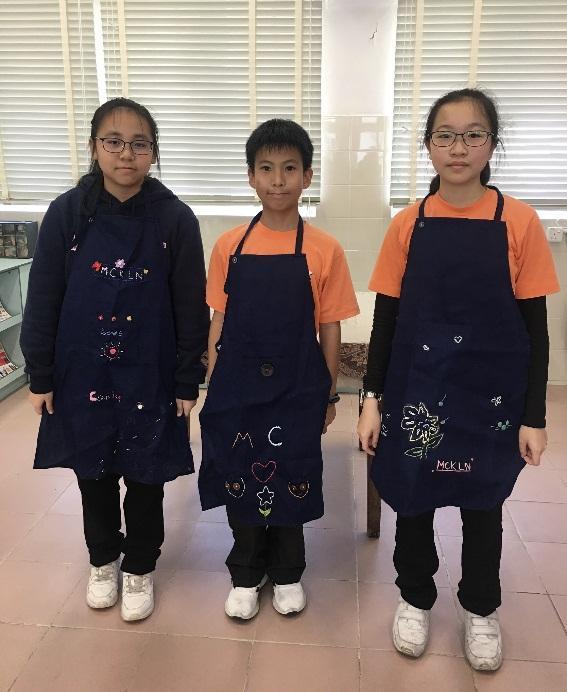
Apron display on the Founders’ Day and 60th Anniversary in 2018
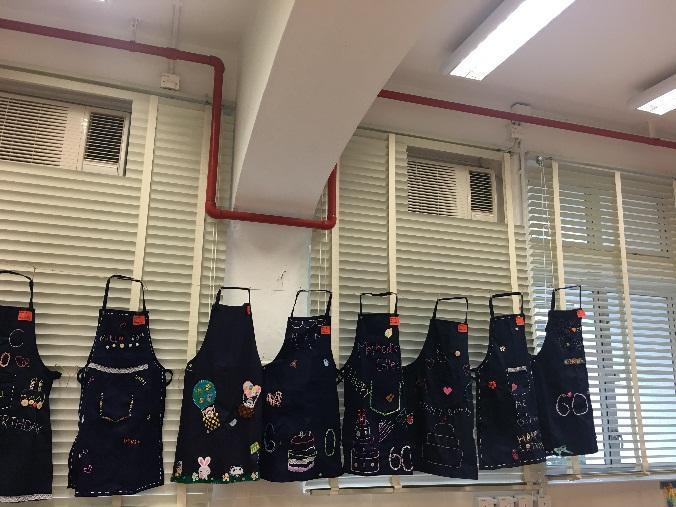
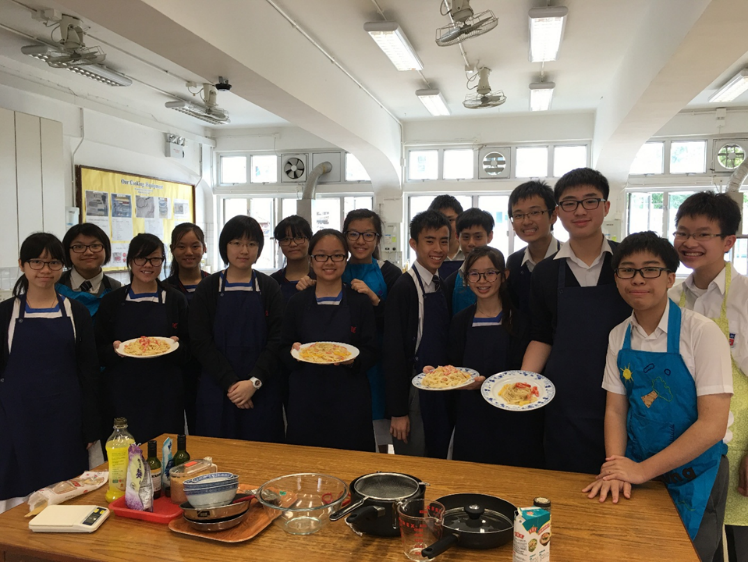
Cooking lessons - both boys and girls are having fun in cooking lessons.
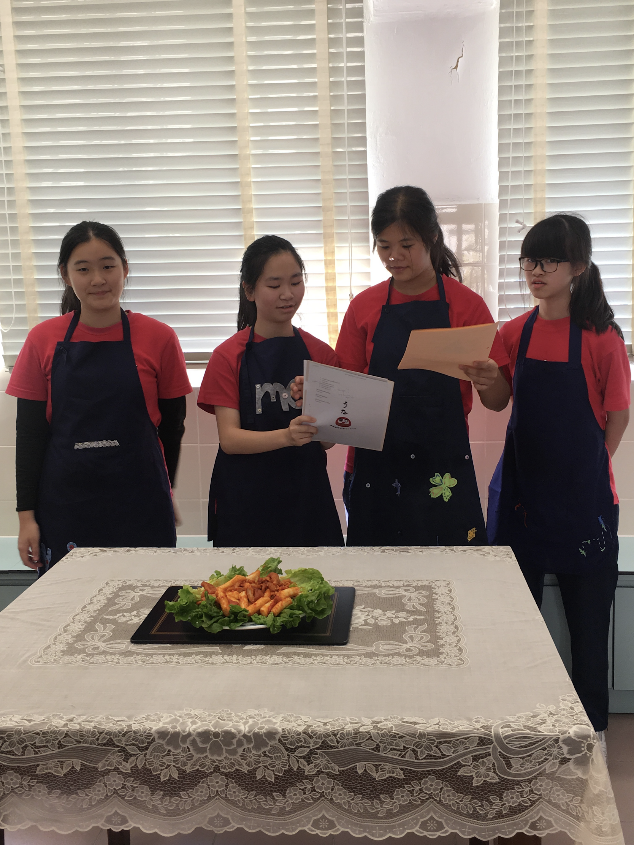
Cooking test – students are doing a presentation of the dishes made.
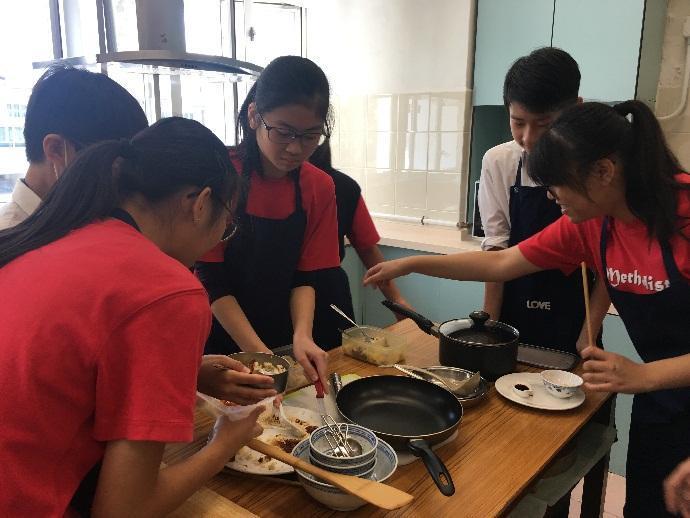
Cooking test – students are doing peer assessment and enjoying others’ dishes together after the presentation.
Students’ reflection on cooking lessons submitted to an online platform.
